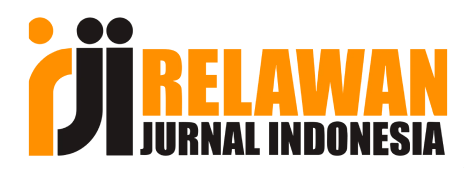Sustainable Tourism Development Combining Health And Culture As A Local Community-Based Wellness Tourism Attraction In Gebong Memarong Tradisional Village, Airabik, Bangka Regency
DOI:
https://doi.org/10.35313/jtospolban.v5i2.142Keywords:
Wellness Tourism, Traditional Village, Community-Based TourismAbstract
Gebong Memarong Airabik Traditional Village possesses significant potential for development as a health tourism destination, leveraging its rich natural resources, cultural heritage, and traditional healing practices. This study aims to identify the village's health tourism appeal and examine the roles of key stakeholders, including the Bangka Regency Tourism Office, the Indonesian Tourism Actors Association (ASPI), PT Timah Tbk, local tourism awareness groups (Pokdarwis), and indigenous communities. A qualitative approach was used, with data collected through direct observation, interviews, and documentation analysis. Findings indicate that collaboration between stakeholders and the local community has played a critical role in promoting the village and improving local human resource capacity. The development of health tourism is centered on the use of herbal plants for traditional medicine, which aligns with the principles of sustainable tourism. However, regulatory challenges—particularly concerning land use zoning—remain a threat to the preservation of local wisdom and sustainable development. Ongoing efforts are addressing these issues through formal regulation and the promotion of herbal products and wellness services, such as scrubs, herbal drinks, retreats, and spas for both domestic and international markets. This study emphasizes the importance of integrating cultural values and traditional knowledge into tourism planning, while ensuring institutional support and policy alignment for long-term sustainability.
References
Afriansyah Budi, & Wicaksono D,B, SE (2013). Medicinal Plants of the Lum Tribe. University of Bangka Belitung. Press.http://repository.ubb.ac.id/id/eprint/3226/2/Suku%20Lom_2.pdf
Aulia Nisak M., & Nurbayani S., (2022). Wellness Tourism Based on Local Wisdom, 8 (2). https://journal.unesa.ac.id/index.php/jpsi/article/view/18256
Diyah Sri Widari, & Dewa Ayu, (2022). Local Aesthetic Values and Local Economic Values in the Management of Tourism Destinations in North Bali. Mudra Journal of Arts and Culture , 37(1):60 – 6 . =https://jurnal.isi-dps.ac.id/index.
Global Wellness Institute. (2022). White Father Series: Wellness Coaching Initiative . https://globalwellnessinstitute.org
Global Wellness Institute. (2023). The Global Wellness Economy: Country Rankings . 2024-the-global-wellness-economy-country-rankings
Heny, M., Dewi, U., et al. (2018). Development of Tourism Village Based on Local Community Participation in Jatiluwih Tourism Village, Tabanan, Bali. Kawistara , (Vol. 129, (2).
Lestari, ZA, Marmaiyatno, Pusparini, M., Marwani, IS, & Prima, AG (2024). Identification of tourist area life cycle in Gebong Memarong Tourist Village, Bangka Regency. Journey: Journal of Tourismpreneurship, Culinary, Hospitality, Convention, and Event Management , 7 (1), 27–34. https://ojs-journey.pib.ac.id/index.
Mueller, H., & Kaufmann, E. L. (2007). Wellness Tourism: Market Analysis of A Special Health Tourism Segment and Implications for The Hotel Industry. Journal of Vacation Marketing, 7(1):5 - 17.
Parmin, P., Rusilowati, A., et al. (2022). Community Empowerment Through Medicinal Plant Conservation to Support the Provision of Raw Materials for Traditional Herbal Medicine Production. Journal of Community Empowerment.,1(1),10–1. https://doi.org/10.46843/jmp.v1i1.263
Permatasari, I. (2022). The Role of Community Based Tourism development model in Realizing Sustainable Tourism di Bali. Kertha Wicaksana: Sarana Komunikasi Dosen dan Mahasiswa. 16 (2). Pp 164-171 https://doi.org/10.22225/kw.16.2.2022.164-171
Prayoga, GI, Faradis, & S., Sari, P., Anggia, et.al., (2022). Development of Medicinal Plant Conservation Areas Based on Local Wisdom of the Mapur Indigenous Community. Journal of Community Service, University of Bangka Belitung,9(2),25–33. https://doi.org/10.33019/jpu.v9i2.3599
Savitri, N., & Arida, I., (2019). The Role of Village Elites in the Development of Wellness Tourism in Bindu Traditional Village, Mekar Bhuana Village, Abiansemal District, Badung Regency. Journal of Tourism Destinations,7(1),11. https://doi.org/10.24843/jdepar.2019.v07.i01.p02
Sulistyadi, Y., Eddyono. F., & Hasibuan, B. (2017). Sustainable Tourism: Community-Based Tourism Destination Management. AURA .https://journal.uib.ac.id/index. OMAxXFxzgGHSiACUEQFnoECA8QAQ&usg=AOvVaw2T7jzqDCgxuBOLJBwsc7Ly
Syuraya Faradis, PS et al. (2022). Development of Medicinal Plant Conservation Areas Based on Local Wisdom of the Mapur Indigenous Community. UBB Community Service Journal , Vol. 9 , No. 2.
T. Sharma, J. S. Chen, W. D. Ramos, and A. Sharma, “Visitors’ eco-innovation adoption and green consumption behavior: the case of green hotels,” Int. J. Contemp. Hosp. Manag., vol. 36, no. 4, pp. 1005–1024, 2024, doi: 10.1108/IJCHM-04-2022- 0480.
Kurniawan, A., Nurmandi, A., Fridayani, H.D., & Tai, K. T., (2024). Optimizing Local Assets In Wellness Tourism Development and Implications for Enviromental Sustainability in Indonesia. In E3S Web of Conferences ) EDP Sciences, 594 (200).
Lesmana, F., Malilah E., & Andari R., (2022). Wellness Tourism Social Based Tourism Strategy in the Covid-19 Era In Bandung Good Guide, 7 (2). https://jurnal.unmer.ac.id/index.
Wendri, IGM (2019). Motivation of Foreign Tourists to Enjoy Wellness Tourism in Bali. Udayana University. https://sloap.org/journals/index.php/ijllc
Q. B. Baloch et al., “Impact of tourism development upon environmental sustainability: a suggested framework for sustainable eco-tourism,” Environ. Sci. Pollut. Res., vol. 30, no. 3, pp. 5917–5930, doi: 10.1007/s11356-022-22496-w.
Downloads
Published
Issue
Section
License
Copyright (c) 2025 Hardyanti, Bagas Anggara

This work is licensed under a Creative Commons Attribution-NonCommercial-ShareAlike 4.0 International License.



.png)

















